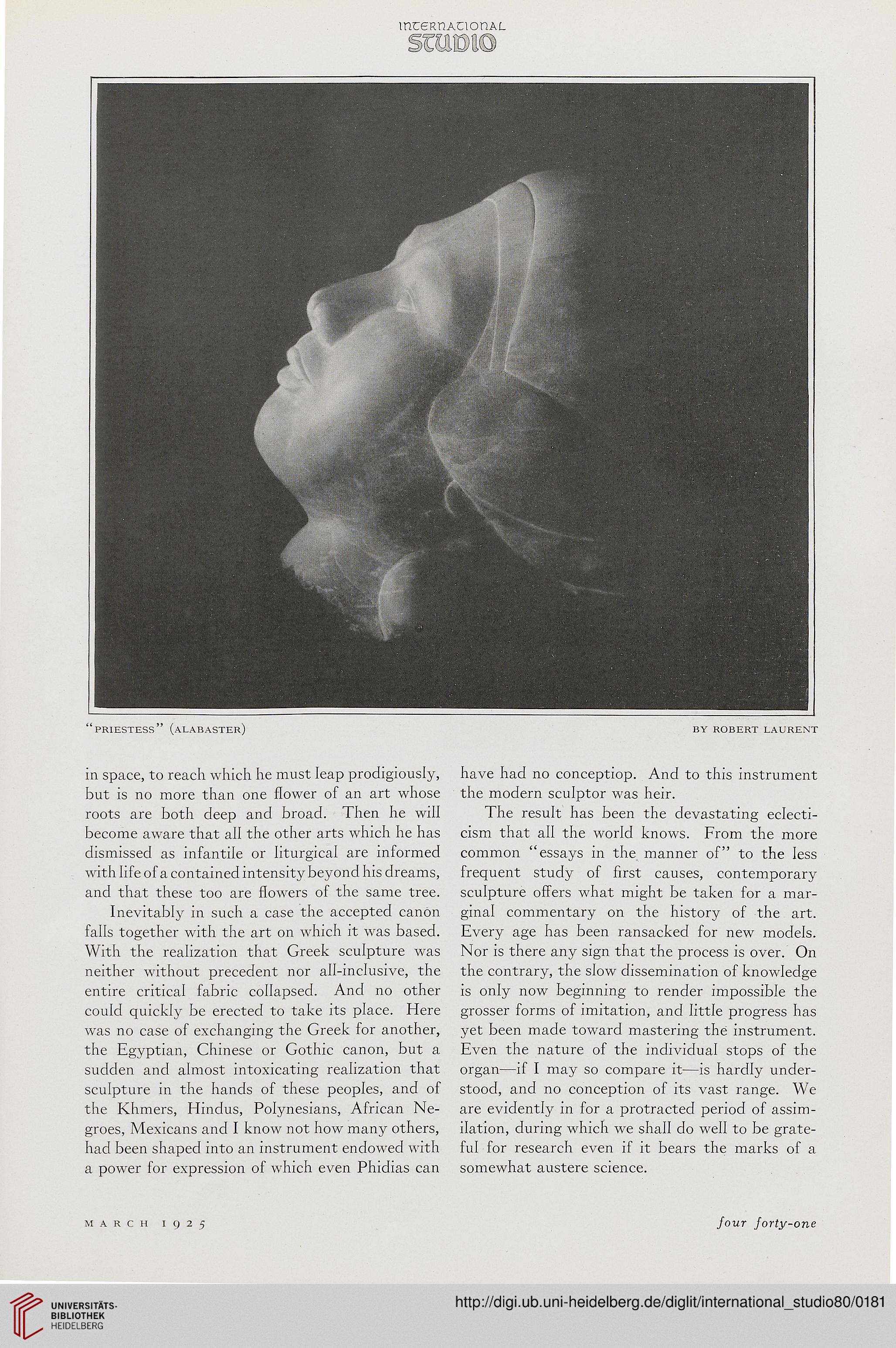irrceRnAtionAL
in space, to reach which he must leap prodigiously,
but is no more than one flower of an art whose
roots are both deep and broad. Then he will
become aware that all the other arts which he has
dismissed as infantile or liturgical are informed
with life of a contained intensity beyond his dreams,
and that these too are flowers of the same tree.
Inevitably in such a case the accepted canon
falls together with the art on which it was based.
With the realization that Greek sculpture was
neither without precedent nor all-inclusive, the
entire critical fabric collapsed. And no other
could quickly be erected to take its place. Here
was no case of exchanging the Greek for another,
the Egyptian, Chinese or Gothic canon, but a
sudden and almost intoxicating realization that
sculpture in the hands of these peoples, and of
the Khmers, Hindus, Polynesians, African Ne-
groes, Mexicans and I know not how many others,
had been shaped into an instrument endowed with
a power for expression of which even Phidias can
have had no conceptiop. And to this instrument
the modern sculptor was heir.
The result has been the devastating eclecti-
cism that all the world knows. From the more
common "essays in the manner of" to the less
frequent study of first causes, contemporary
sculpture offers what might be taken for a mar-
ginal commentary on the history of the art.
Every age has been ransacked for new models.
Nor is there any sign that the process is over. On
the contrary, the slow dissemination of knowledge
is only now beginning to render impossible the
grosser forms of imitation, and little progress has
yet been made toward mastering the instrument.
Even the nature of the individual stops of the
organ—if I may so compare it—is hardly under-
stood, and no conception of its vast range. We
are evidently in for a protracted period of assim-
ilation, during which we shall do well to be grate-
ful for research even if it bears the marks of a
somewhat austere science.
MARCH 1925
jour forty-one
in space, to reach which he must leap prodigiously,
but is no more than one flower of an art whose
roots are both deep and broad. Then he will
become aware that all the other arts which he has
dismissed as infantile or liturgical are informed
with life of a contained intensity beyond his dreams,
and that these too are flowers of the same tree.
Inevitably in such a case the accepted canon
falls together with the art on which it was based.
With the realization that Greek sculpture was
neither without precedent nor all-inclusive, the
entire critical fabric collapsed. And no other
could quickly be erected to take its place. Here
was no case of exchanging the Greek for another,
the Egyptian, Chinese or Gothic canon, but a
sudden and almost intoxicating realization that
sculpture in the hands of these peoples, and of
the Khmers, Hindus, Polynesians, African Ne-
groes, Mexicans and I know not how many others,
had been shaped into an instrument endowed with
a power for expression of which even Phidias can
have had no conceptiop. And to this instrument
the modern sculptor was heir.
The result has been the devastating eclecti-
cism that all the world knows. From the more
common "essays in the manner of" to the less
frequent study of first causes, contemporary
sculpture offers what might be taken for a mar-
ginal commentary on the history of the art.
Every age has been ransacked for new models.
Nor is there any sign that the process is over. On
the contrary, the slow dissemination of knowledge
is only now beginning to render impossible the
grosser forms of imitation, and little progress has
yet been made toward mastering the instrument.
Even the nature of the individual stops of the
organ—if I may so compare it—is hardly under-
stood, and no conception of its vast range. We
are evidently in for a protracted period of assim-
ilation, during which we shall do well to be grate-
ful for research even if it bears the marks of a
somewhat austere science.
MARCH 1925
jour forty-one




